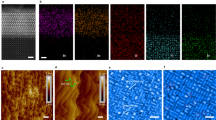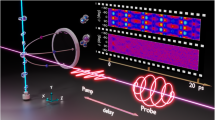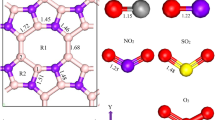Abstract
WE have observed double molecules, for example (CO2)2, in carbon dioxide, nitrous oxide, nitrogen, oxygen, argon and xenon. It is believed that these double molecules exist in all gases at temperatures where the attractive Van der Waals interaction is of importance, and where the pressure is sufficiently high to produce a significant fraction of three-body collisions. Their existence has been predicted for many years1.
This is a preview of subscription content, access via your institution
Access options
Subscribe to this journal
Receive 51 print issues and online access
$199.00 per year
only $3.90 per issue
Buy this article
- Purchase on SpringerLink
- Instant access to full article PDF
Prices may be subject to local taxes which are calculated during checkout
Similar content being viewed by others
References
Jeans, J. H., The Dynamical Theory of Gases (Cambridge Univ. Press, 1904).
Leckenby, R. E., Robbins, E. J., and Trevalion, P. A., Proc. Roy. Soc., A, 280, 409 (1964).
Norton, F. J., Mass Spectroscopy in Physics Research, Nat. Bur. Stand. Circ., 522 (1953).
Stogryn, D. E., and Hirschfelder, J. O., J. Chem. Phys., 31, No. 6 1531 (1959).
Author information
Authors and Affiliations
Rights and permissions
About this article
Cite this article
ROBBINS, E., LECKENBY, R. Double Molecules in Gases. Nature 206, 1253 (1965). https://doi.org/10.1038/2061253a0
Issue date:
DOI: https://doi.org/10.1038/2061253a0



